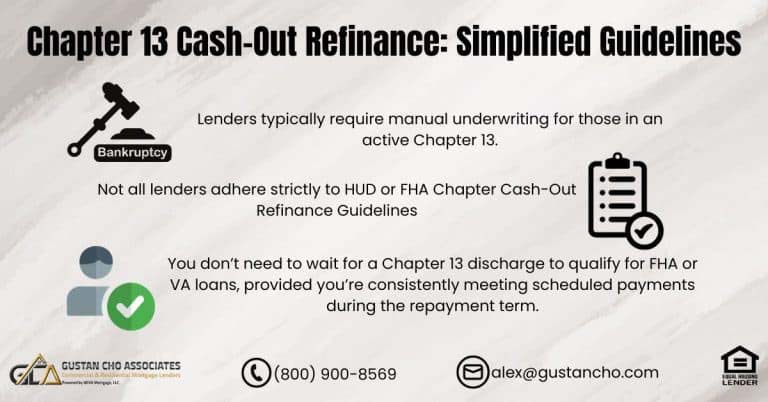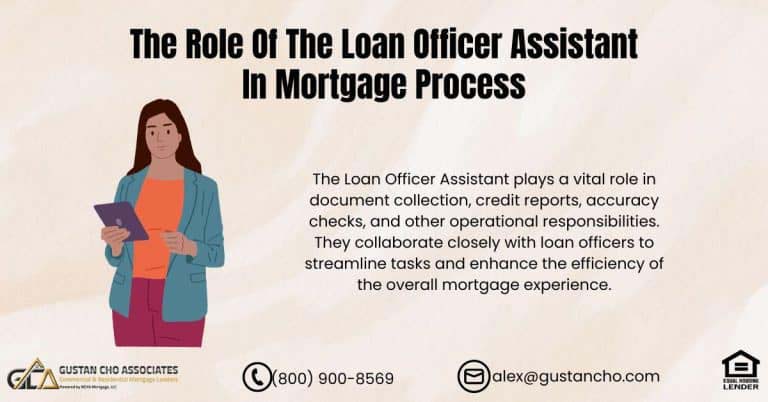Apartment Building Loans: Your Complete Guide in 2025
If you plan to buy or refinance a multifamily property, look for apartment building loans. Whether it’s a small duplex, a medium-sized apartment complex, or a large multifamily project, getting the right financing is key to your investment success.
At Gustan Cho Associates, we help real estate investors and first-time multifamily buyers find the best mortgage programs. Unlike many lenders, we don’t have extra restrictions and work with over 280 wholesale lenders nationwide. This gives you more options, better rates, and flexible guidelines.
This guide will provide everything you need to know about apartment building loans in 2025, including requirements, loan types, down payments, interest rates, and tips for qualifying.
What Are Apartment Building Loans?
Apartment building loans are financing programs designed to help you purchase, refinance, build, or renovate a property with multiple rental units. These can include:
- Duplexes, triplexes, and fourplexes
- Townhomes and condominium communities
- Small and large apartment complexes
- Mixed-use buildings with both commercial and residential units
Unlike a single-family home mortgage, apartment buildings fall under commercial real estate financing. This means lenders focus less on your personal credit and more on the property’s ability to generate income.
Take First Step Toward Homeownership With Employment Offer Letter
Apply Online And Get recommendations From Loan Experts
Why Apartment Building Loans Are Different From Regular Mortgages
If you’ve ever bought a house, you know lenders check out your income, credit score, and what you owe. But when it comes to loans for apartment buildings, lenders focus on different stuff:
- Net Operating Income (NOI): Does the property make enough money to cover the mortgage?
- Debt Service Coverage Ratio (DSCR): Can rental income pay the loan, taxes, and insurance with room to spare?
- Property condition: Is the building rentable and in good shape?
- Experience: As the borrower, do you have a history of managing rentals?
Getting approved for apartment building loans requires strong paperwork and a clear investment plan.
Types of Apartment Building Loans in 2025
Every investor’s situation is different. The good news is that multiple types of apartment building loans are available in 2025.
1. Conventional Commercial Mortgage for Apartment Buildings
Conventional commercial mortgages for apartment buildings are usually offered by banks and credit unions. When looking for this type of loan, expect to put down 20% to 30% upfront. The loan terms vary, ranging from 5 to 30 years, and some might even have balloon payments. You can pick between fixed or adjustable interest rates depending on what works best financially.
These loans are perfect for folks with good credit, a solid income history, and a stable property. A strong financial background boosts your chances of scoring good loan terms, making it easier to fund your investments in multifamily real estate.
2. Government-Backed Apartment Building Loans
Programs like Fannie Mae, Freddie Mac, and FHA Multifamily Loans offer more flexible terms and are very popular with investors.
- Fannie Mae & Freddie Mac Multifamily Loans: These are common for apartment complexes, often starting at a loan size of $1 million.
- FHA Multifamily Loans (HUD 223(f), HUD 221(d)(4)): Allow long-term fixed financing (up to 35 years) with lower down payments. These are great for both purchase and rehab projects.
These government-backed apartment building loans often come with lower rates, but require more documentation and take longer to close.
3. Portfolio Loans for Small Apartment Buildings
Portfolio loans are an excellent option for small apartment building investors, particularly those starting with properties like duplexes or fourplexes. Unlike traditional lenders who sell their loans to Fannie Mae or Freddie Mac, portfolio lenders retain these loans on their books. This approach allows for more flexible credit requirements and makes securing loan amounts under $1 million easier. A portfolio loan could fit your needs if you’re looking to invest in small multifamily properties.
4. Bridge Loans for Apartment Buildings
If you’re trying to buy a property that needs a lot of work or isn’t making money yet, traditional lenders might not be the way to go for financing. Short-term bridge loans or hard money loans for apartment buildings can be helpful in those situations. These loans usually ask for a bigger down payment—around 30% to 35%—and often come with higher interest rates.
Plus, the terms are shorter, typically lasting from 6 to 36 months, making them a good choice for investors who need quick cash.
Bridge loans are great for fixing up or stabilizing a property before moving on to more long-term financing options, like refinancing. They’re especially useful for investors looking to flip or reposition apartment buildings. By providing the cash needed for urgent improvements, these loans help investors tap into the hidden value of distressed properties faster.
5. Non-QM and DSCR Loans for Apartment Buildings
In 2025, non-QM loans have gained significant traction among real estate investors, especially for those who may struggle to qualify for traditional financing.
The DSCR (Debt Service Coverage Ratio) loan is a popular choice in this area. It looks at the rental income from the property to decide if you qualify, instead of your personal income. This makes the approval process a lot easier since you don’t have to deal with tax returns, and it works for various credit scores.
These loans are particularly beneficial for self-employed investors or individuals with intricate financial situations, making them ideal solutions for both small and large apartment building acquisitions. With flexible requirements, non-QM and DSCR loans provide investors with the opportunity to secure financing without the constraints typically associated with conventional loan products.
Who helps real estate investors with apartment loans?
Gustan Cho Associates partners with 280+ wholesale lenders nationwide.
Questions Investors Ask About Apartment Building Loans
To match what borrowers search for, let’s answer some common questions:
How Much Down Payment Do You Need for Apartment Building Loans?
Most lenders require 20% to 30% down payment. Government-backed loans may allow lower down payments, while bridge loans often require more.
What Credit Score Do You Need for Apartment Building Loans?
A lot of lenders want you to have a credit score of at least 660 to 680, but with Gustan Cho Associates, you might be able to get approved even if your score is lower, depending on the program.
What Are the Current Interest Rates for Apartment Building Loans in 2025?
Rates depend on loan type:
- Conventional loans: 6%–8%
- Fannie Mae/Freddie Mac: 5%–7%
- FHA multifamily loans: 5%–6%
- Bridge loans: 9%–12%
Rates change daily, so contact us for a personalized quote.
How Long Are Apartment Building Loan Terms?
- Government-backed: Up to 35 years
- Bank loans: 5–20 years, often with balloon payments
- DSCR/non-QM: 30-year fixed available
Requirements for Apartment Building Loans
When applying for apartment building loans, expect to provide:
- Rent roll (current and past 12 months)
- Operating statements for the past 2–3 years
- Property appraisal and photos
- Your personal financial statement
- Business and personal tax returns (unless DSCR loan)
- Proof of liquidity (cash reserves for repairs and vacancies)
The stronger your property’s financials, the better your chances of approval.
Risks and Rewards of Apartment Building Loans
Like any real estate investment, apartment building loans have pros and cons.
Rewards:
- Steady rental income
- Property value appreciation
- Tax benefits (depreciation, deductions)
- Ability to scale your real estate portfolio
Risks:
- Vacancies or rental downturns
- Higher management costs
- Prepayment penalties or balloon payments
- Market fluctuations
At Gustan Cho Associates, we help investors structure loans that reduce risks and maximize returns.
Do I need tax returns to qualify for an apartment building loan?
Not always—DSCR and stated-income loans don’t require them.
Prepayment Penalties and Yield Maintenance
Most apartment building loans have prepayment penalties, especially with commercial or agency loans. A typical schedule is 5-4-3-2-1, meaning 5% of the loan balance if you pay off in year 1, 4% in year 2, and so on.
Fannie Mae loans may have a yield maintenance premium, which charges the interest you would have paid if you kept the loan until maturity.
This is why planning your exit strategy is critical before choosing a loan.
How to Qualify for Apartment Building Loans in 2025
Here are the main factors lenders look at:
- Property Income – Does rental income cover at least 1.20 to 1.25 DSCR?
- Your Experience – Have you owned or managed rentals before?
- Liquidity – Do you have reserves for repairs and vacancies?
- Credit History – While property income matters most, good credit helps secure better terms.
Even if you’ve been denied elsewhere, Gustan Cho Associates can help because we work with lenders who allow exceptions.
Why Work With Gustan Cho Associates?
Most banks have strict rules and overlays. At Gustan Cho Associates, we:
- Offer no lender overlay policies
- Approve loans with lower credit scores than most banks
- Work with 280+ wholesale lenders for the best programs
- Close faster with direct access to underwriters
- Help 80% of our borrowers who were denied elsewhere
Whether you’re a first-time investor or an experienced developer, we have the right program for you.
Final Thoughts on Apartment Building Loans
Putting your money in multifamily properties can be a great way to build long-term wealth. The trick is to get the right financing in place.
Apartment building loans in 2025 offer more flexibility than ever—whether you need a conventional mortgage, government-backed financing, or a non-QM DSCR loan.
Borrowers who need a five-star national mortgage company licensed in 50 states with no overlays and who are experts on apartment building loans, please contact us at 800-900-8569, text us for a faster response, or email us at alex@gustancho.com. At Gustan Cho Associates, our team is ready to guide you every step, from finding the right program to closing on your property.
Frequently Asked Questions About Apartment Building Loans:
Q: What is an Apartment Building Loan?
A: It’s a loan you use to buy, build, or refinance a property with more than one rental unit, like a duplex, triplex, or big apartment complex.
Q: How Much Money do I Need for an Apartment Building Loan?
A: Most lenders require a 20% to 30% down payment, but some government loans may allow you to put down less.
Q: Can I Get an Apartment Loan with Bad Credit?
A: Yes, some programs allow lower credit scores. At Gustan Cho Associates, we work with lenders who help people with low credit scores who other banks turn down.
Q: Do Lenders Look More at Me or the Property?
A: With apartment building loans, lenders mainly consider the property’s income and ability to pay for itself.
Q: What Credit Score do I Need for an Apartment Building Loan?
A: Most lenders like to see at least 660 to 680, but there are programs for lower scores, too.
Q: What Types of Apartment Building Loans are Out There?
A: You can choose from bank loans, government loans like FHA or Fannie Mae, bridge loans, DSCR loans, and portfolio loans.
Q: How Long Can the Loan Term be?
A: Some loans are short (5–10 years), while FHA and government loans can go up to 35 years.
Q: What’s DSCR, and Why Does it Matter?
A: DSCR stands for Debt Service Coverage Ratio. Lenders use it to determine whether the rent money from the property can cover the loan payments.
Q: Can I Refinance My Apartment Building Loan Later?
A: Many investors refinance to get better rates, pull out cash, or move from a short-term bridge loan into a long-term loan.
Q: How do I Apply for an Apartment Building Loan?
A: The first step is to talk with a lender like Gustan Cho Associates. We’ll review your property and goals and match you with the best loan program.
This article about “Apartment Building Loans For Real Estate Investors” was updated on August 27th, 2025.
Can I get a loan for an apartment building?
Yes—programs include DSCR, commercial, bridge, and construction loans.











Good article with an excellent way of presentation. Keep it up. Thanks for sharing.
http://www.accessdoorsandpanels.com/